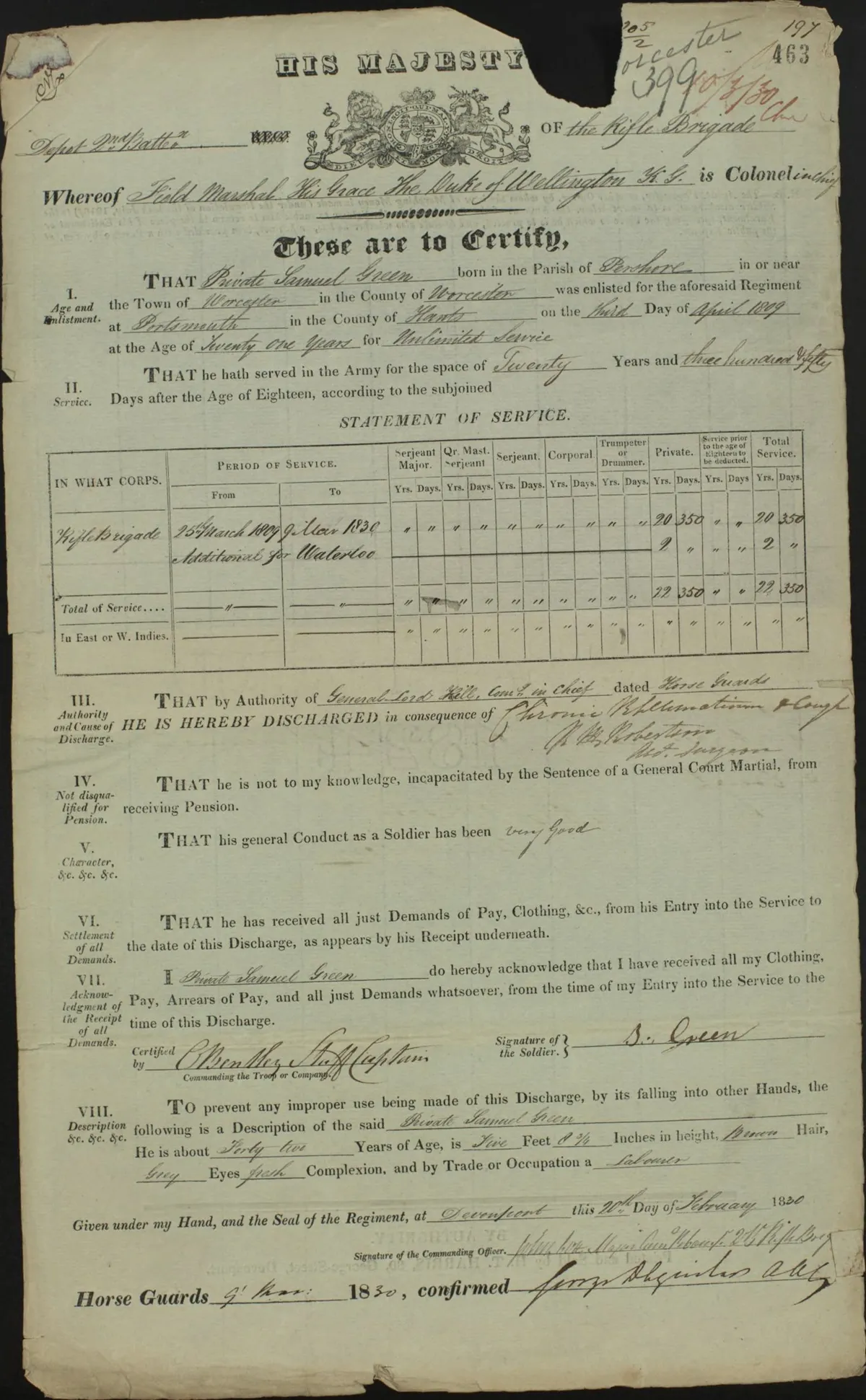What is a Chelsea Pensioner?
Completed in 1692, the Royal Hospital in Chelsea, West London, was built as a home for ex-soldiers “broken by age or war”. A similar institution opened in Ireland in 1684, the Royal Hospital Kilmainham in Dublin. The hospital was the administrative centre for British army pensions until 1955, hence the term ‘Chelsea Pensioner’. If this phrase appears on a census record, or a marriage or death certificate, it means that your ancestor was receiving an army pension. Before 1822, some pensions were administered by the Royal Hospital Kilmainham.
Army pensions were awarded to soldiers who were injured or disabled during service; who were ‘worn out’, chronically ill and not fit for duty; or who had served an agreed term of service. In the 18th and early 19th centuries this was usually 21 years, but later soldiers could receive a pension after 12 years. The amount depended on the length of service.
There were two categories of pensioners: in-pensioners at the Royal Hospital in Chelsea, and out-pensioners living elsewhere in the UK or overseas. In-pensioners had to surrender their pensions, and have no dependants. When it opened, there was room for 476 in-pensioners. However, the majority of retired soldiers were out-pensioners. In 1703, there were just 51 but this number rose to 36,757 by 1815, and to 85,834 in 1828. In 1852, there were still 66,730 out-pensioners. Today, the Royal Hospital is home to 300 Chelsea Pensioners.
How to find Chelsea Pensioners' service records

The original ‘Royal Hospital Chelsea Soldiers’ Service Documents’ (WO97) for 1760–1913 are held at The National Archives (TNA) in Kew. This is the main set of Chelsea Pensioners’ service records for ordinary soldiers (not officers) discharged from the Army between 1760 and 1882, and receiving a pension. They also include those discharged and not killed while in service between 1883 and 1913.
Start off by searching for your ancestor’s name within the Chelsea Pensioners’ service records. The enhanced descriptions include place and county of birth, regiment served in, and age at discharge. You can then look at the Chelsea Pensioners’ service records on Findmypast (select ‘WO97’ in the series) or Ancestry, which has a number of Chelsea Pensioners' service records collections. There is also a good collection of Chelsea Pensioner registers, admission books and ledgers on TheGenealogist.
The Chelsea Pensioners’ service records were created by the soldier’s last regiment as proof of his pension entitlement. They incorporate discharge papers, pension information and sometimes attestation papers. Generally, the level of detail increases from the middle of the 19th century. As a minimum, the particulars include full name, age, birthplace and occupation, and often the location he enlisted.
The statement of service is a key document listing every regiment the soldier served in and for how long, together with any promotions and a comment about conduct. Note that if a relation was at Waterloo in 1815, then he will have been awarded an extra two years’ service. This would ultimately count towards his pension.
Soldiers were discharged for a variety of reasons. After the Napoleonic Wars, many left due to ‘reduction’ of personnel numbers in peacetime. The phrase ‘worn out’ is often used, and specific diseases, ailments or disabilities may be identified. From the 1860s you may find a fuller medical history, and from 1883 the next of kin, spouse and children are usually named.
Chelsea Pensioners’ service records describe each soldier, including his height, the colour of his eyes and hair, and the type of complexion. This helped to prevent pension fraud and trace deserters. From about 1875, features such as scars and tattoos may be included as well.
Chelsea Pensioners’ service records describe each soldier, including his height, the colour of his eyes and hair
Out-pensioners applied for their quarterly pension payments through local officials; after 1842, district offices administered the payments. If your ancestor received a pension between 1842 and 1883, check TNA’s series ‘Royal Hospital Chelsea: Returns of Payment of Army and Other Pensions’ (WO22). Regular payments are not recorded, but your forebear may be mentioned if he moved to another district, he was a new out-pensioner or he died within the period.
Other sources to try are the ‘Royal Hospital, Chelsea: Admission Books, Registers and Papers’ (WO23) for 1702–1876; and the ‘Royal Hospital, Chelsea: Discharge Documents of Pensioners’ (WO121) for 1760–1887. WO22, WO23 and WO121 are all on Findmypast. TheGenealogist also has a collection of over one million Royal Hospital Chelsea prize records, recording the distribution of military prize money from 1720 to 1899.








